Shark Exhibit
Atlantic Spadefish

Diet: Omnivore
Size: 36 inches
Weight: 3-10 pounds
Life Span: 8-10 years
The mouth of the Atlantic Spadefish is small. Their teeth are also small and brushlike with no teeth on the roof of their mouths. One of the food sources of Spadefish is a type of microalgae that produces ciguatera toxin. These toxins may build up in the body of the fish and be poisonous to humans that decide to eat them.
Nurse Shark
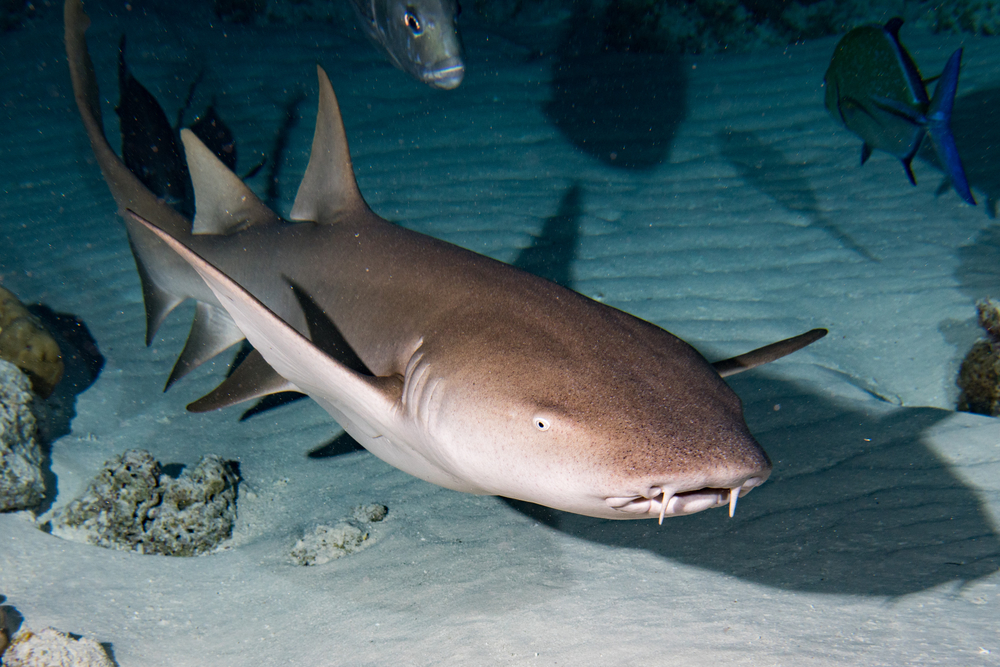
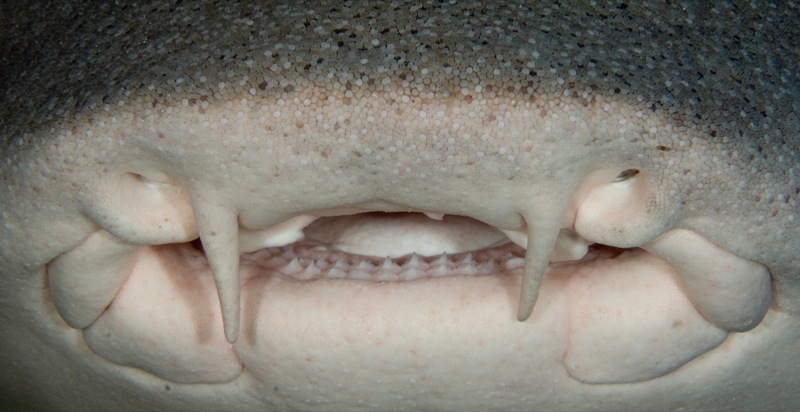
Range: Atlantic Ocean and Eastern Pacific
Diet: Carnivore
Size: up to 10.5 feet
Weight: up to 730 pounds
Life Span: 25 years old
Nurse sharks are ranked fourth in the documented shark bites on humans. However, this is mostly due to the incautious behavior of divers because these sharks have a calm nature about them. They are able to tolerate capture, handling, and tagging extremely well.
Nurse Sharks are opportunistic predators that will feed along the seabed during the night time. Their mouths are relatively small but they are able to generate a suction force that is among the highest recorded for any aquatic vertebrate. They will have a suck-and-spit behavior or they will shake their head violently to reduce the size of the food items.
They have barbells which is the appendage that hang below their nostrils and provide a sense of touch that helps them in the location of their prey. Nurse sharks are also able to pump water over its gills through the opening and closing of its mouth and so do not need to constantly swim like other types of sharks.
Blacktip Reef Shark

Range: Indian and Pacific Oceans
Diet: Carnivore
Size: up to 10.5 feet
Weight: 25-30 pounds
Life Span: 13 years
Blacktip Reef Sharks are an apex predator which means that they are on the top of the food chain in their ecosystem. They keep population control of other species as they prey on them and not much else will prey on the Blacktips. Blacktips are able to detect small objects up to 10 feet away and have an ability called electroreception. Electroreception is possible through the electroreceptors near the nose of the shark and is the ability to perceive the electrical stimuli and to generate electric fields used to locate prey.
Blacktip Reef Sharks have to continue to swim to pump the water over their gills so that they can receive oxygen. They have no eyelids so their eyes are always open and able to still monitor the motion of creatures around them. Blacktips are able to fall into a deep rest but not sleep in the traditional sense.
The best way to tell these three sharks apart are by the angle of the black spot on their dorsal fins. The female is the largest of the three sharks and she has black spot that angles upward. The other two sharks are males and there is one that has a black spot that has a straight line and the other is curved up.
Horn Shark
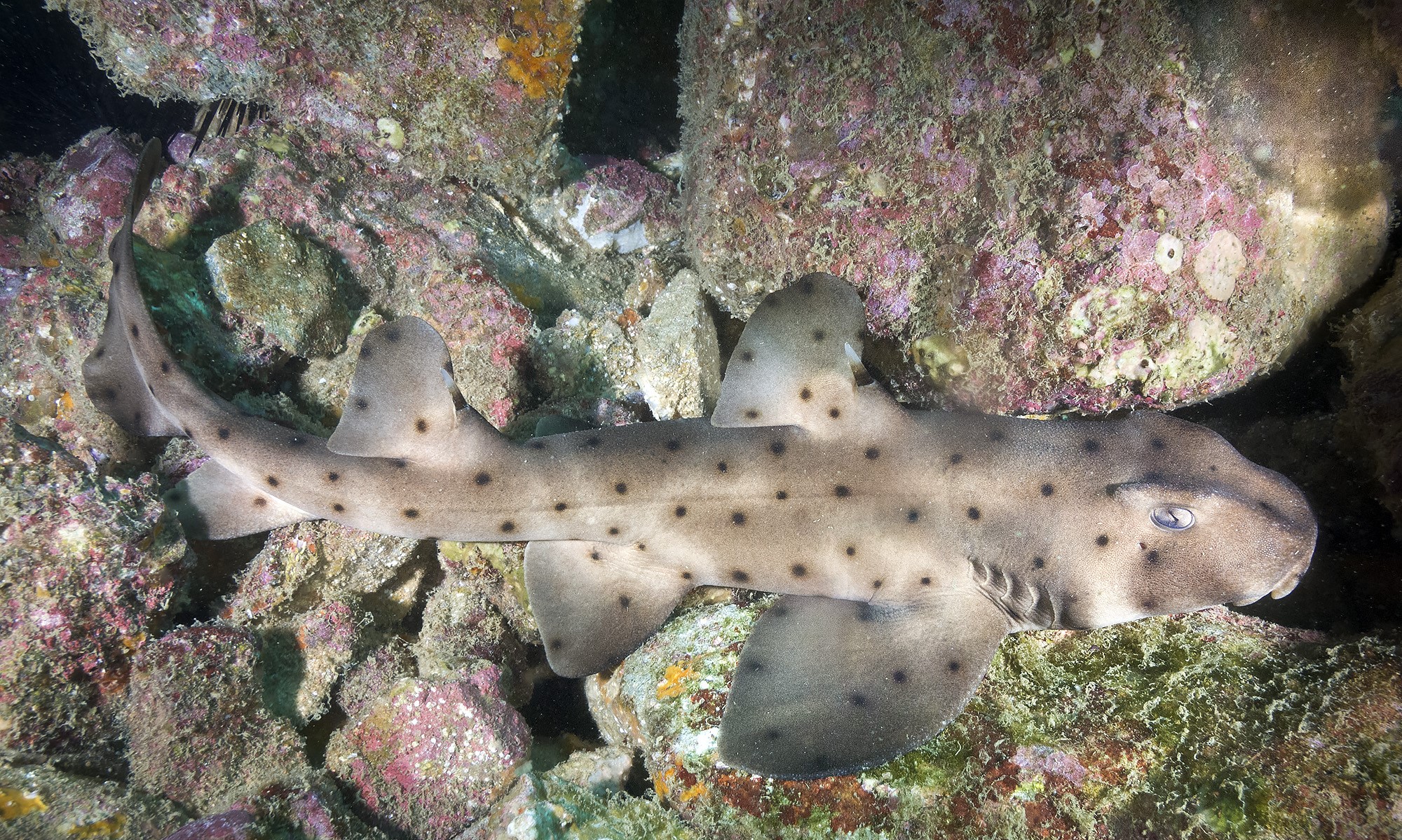
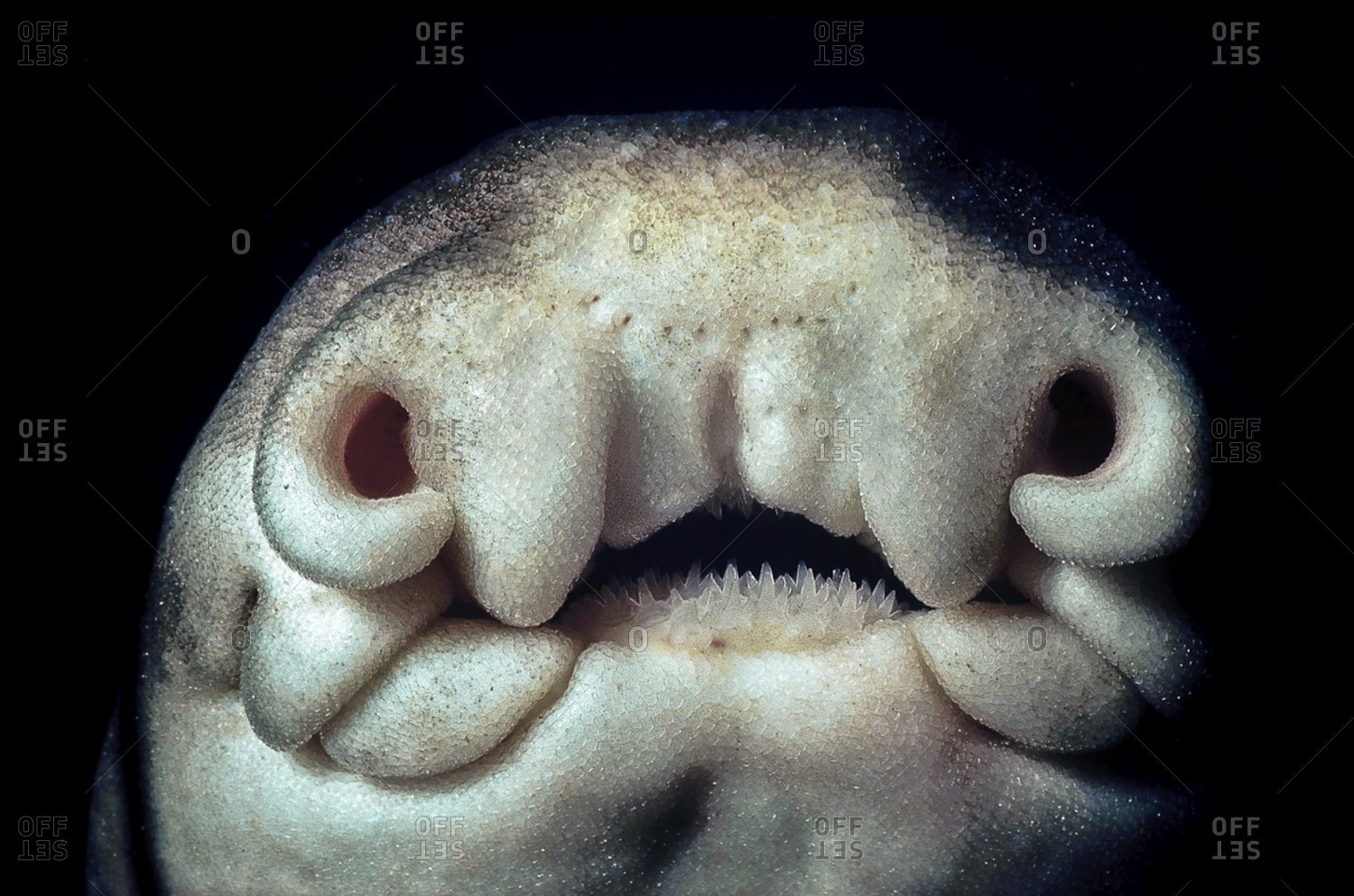
Range: Eastern Pacific Ocean
Diet: Carnivore including mollusks, echinoderms, crustaceans and bony fishes
Size: up to 3 feet
Weight: 20 pounds
Life Span: 12 years
The Horn Shark is part of the bullhead shark family. They are identified by their short blunt heads with ridges over the eyes, two high dorsal fins with large spines and a brown or gray coloration with many dark spots.
They have powerful jaws and molar-like teeth that is used for crushing. Horn Sharks are able to suck their pray from the substrate or makes levering motions with their body to expose their prey. There are 19-26 tooth rows in the upper jaw and 18-29 tooth rows in the lower jaw.
Spotted Scat

Range: Indo-Pacific Ocean
Diet: Omnivore including algae and plankton
Size: up to 12 inches
Life Span: 20 years
Juvenile Spotted Scats will prefer to live in freshwater environments but as they mature they will prefer for the marine environments.
White Spot Bamboo Shark
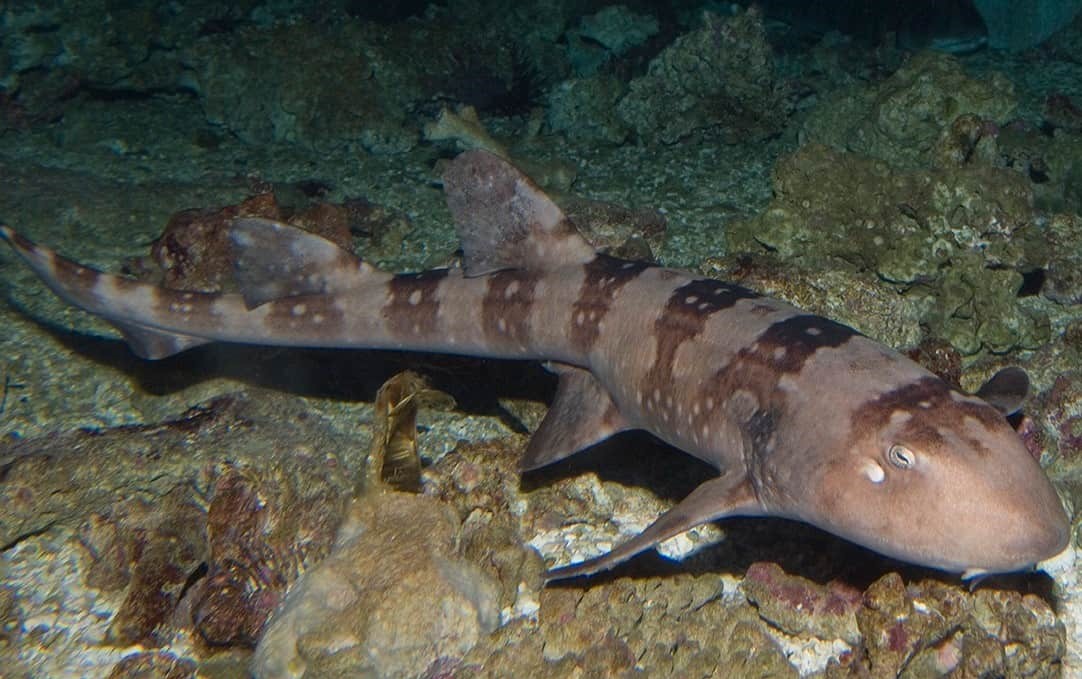
Range: Pacific Ocean
Diet: Carnivore
Size: 3 feet
Life Span: 25 years
The White Spot Bamboo Shark is a carpet shark because of how they resemble ornately patterned carpets. Carpet is interchanged with the word “wobbegong” to describe them. Carpet sharks have only five gill slits, two spineless dorsal fins, and a small mouth.
White Spot Bamboos have 26-35 teeth on the top jaw and 21-32 teeth on the bottom jaw. They also have the ability of electroreception to find prey items buried in the sand. Electroreception is possible through the electroreceptors near the nose of the shark and is the ability to perceive the electrical stimuli and to generate electric fields used to locate prey.
White Spot Bamboos are common species found in home aquariums because of their size.
Barred Spinefoot Rabbitfish
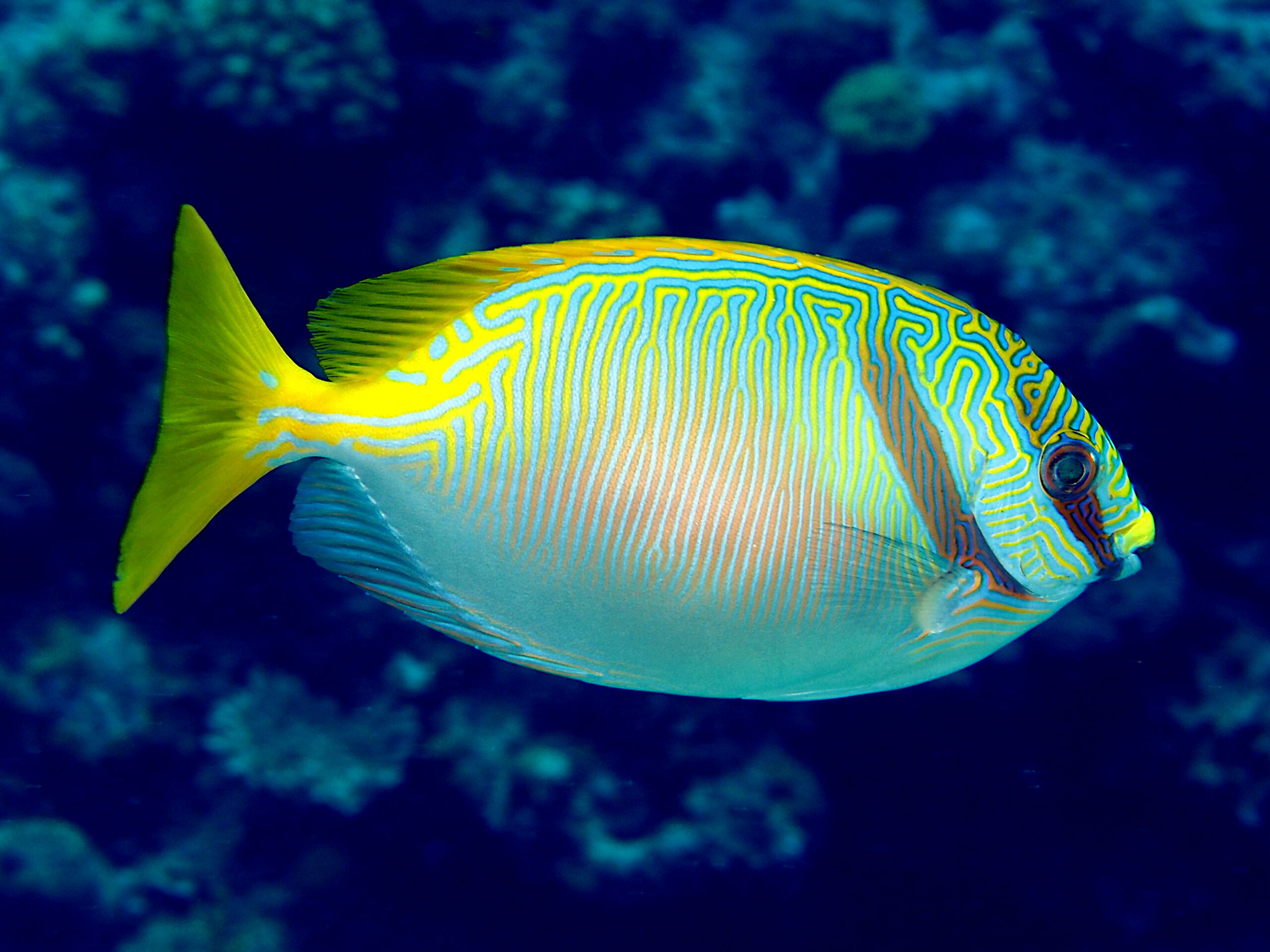
Range: Western Pacific Ocean
Diet: Omnivore
Size: 10 inches
Life Span: 6 years
Rabbitfish are active during the day and live in schools. As they grow older these schools break apart as they start to divide into pairs. This may be a reproductive nature but may also be used as a defense against predators. When they pair together it may not even be between a male and female. This also allows for them to graze safely so that one is always on the lookout while the other is eating. Rabbitfish have venomous spines in the dorsal and pelvic fins.
Blond Naso Tang
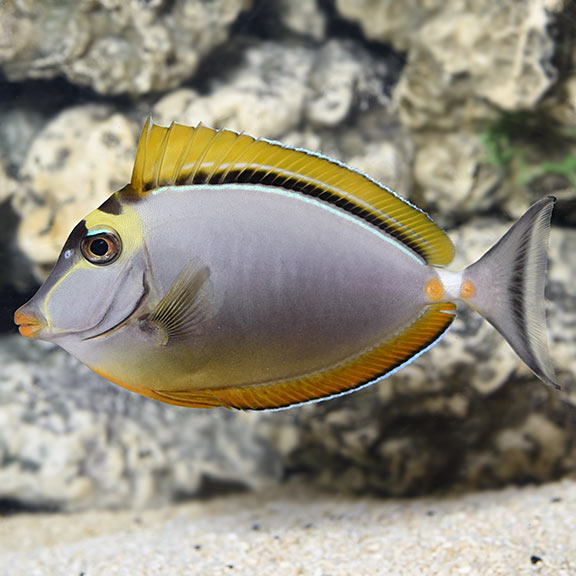
Range: Maldives
Diet: Omnivore
Size: up to 18 inches
Life Span: 10-15 years
Blond Naso Tang is otherwise known as the Orange Spine Unicorn fish. These fish are herbivorous fish that feed on algae that grows on rocks. The reason they seem to have kissy lips is for reaching into tight spots in the rocks to grab food. When they mature the males tend to get a little more fancy in their design. Males tend to become darker and their tail fins grow strands off the top and the bottom having a smaller back fin compared to the female. This is not present in females or young Naso tangs.
These tangs are a crowd favorite when it comes to reef systems. This is due to their love for algae and their beautiful color. They can be dangerous though with a strong bite from what seems like soft kissy lips and a spine that is along the caudal peduncle, which is the back of the tail.
Domino Damsel

Range: found globally in tropical, subtropical and temperate waters
Diet: Omnivore including algae, small crustaceans and plankton
Size: 2 inches
Life Span: about 5 years
Damsels are very territorial and aggressive towards other damsels that enter into that territory. They spend most of their time foraging for food in the water column.
During the courting process, the males will do a signal jump which is when they rise in the water column and then rapidly swims downward. This causes a pulsed sound. Females will choose the males depending on the vigor they show while swimming and on the number and rates of the pulses they create.
Squirrel Fish
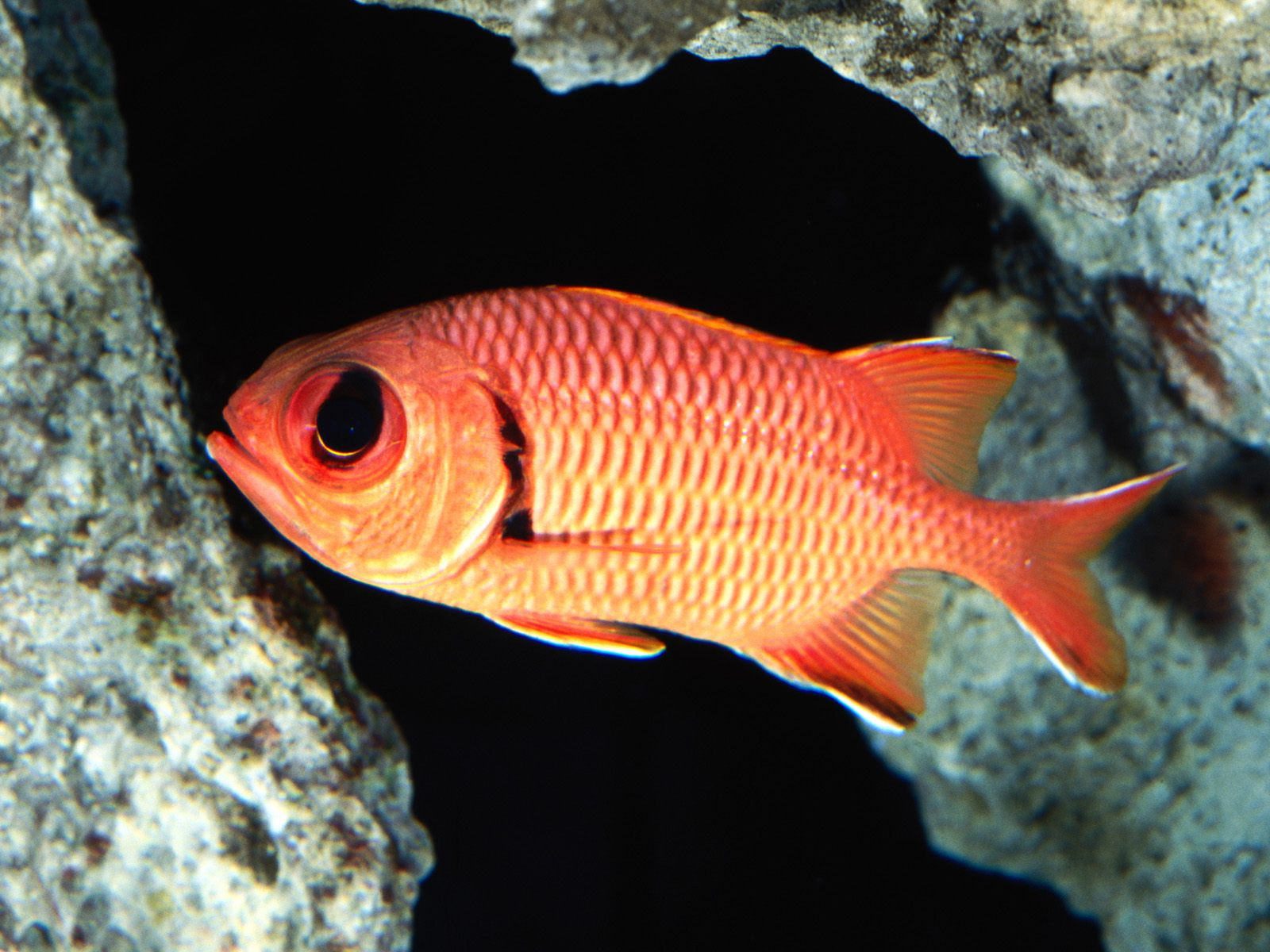
Range: Tropical waters of Indian, Pacific, and Atlantic Oceans
Diet: Omnivore including algae, small fishes, and benthic invertebrates
Size: 6-14 inches
Life Span: 2-4 years
Squirrel fish are nocturnal so they have large eyes to help them see well. During the day they will hide in crevices and caves.
Moray Eel
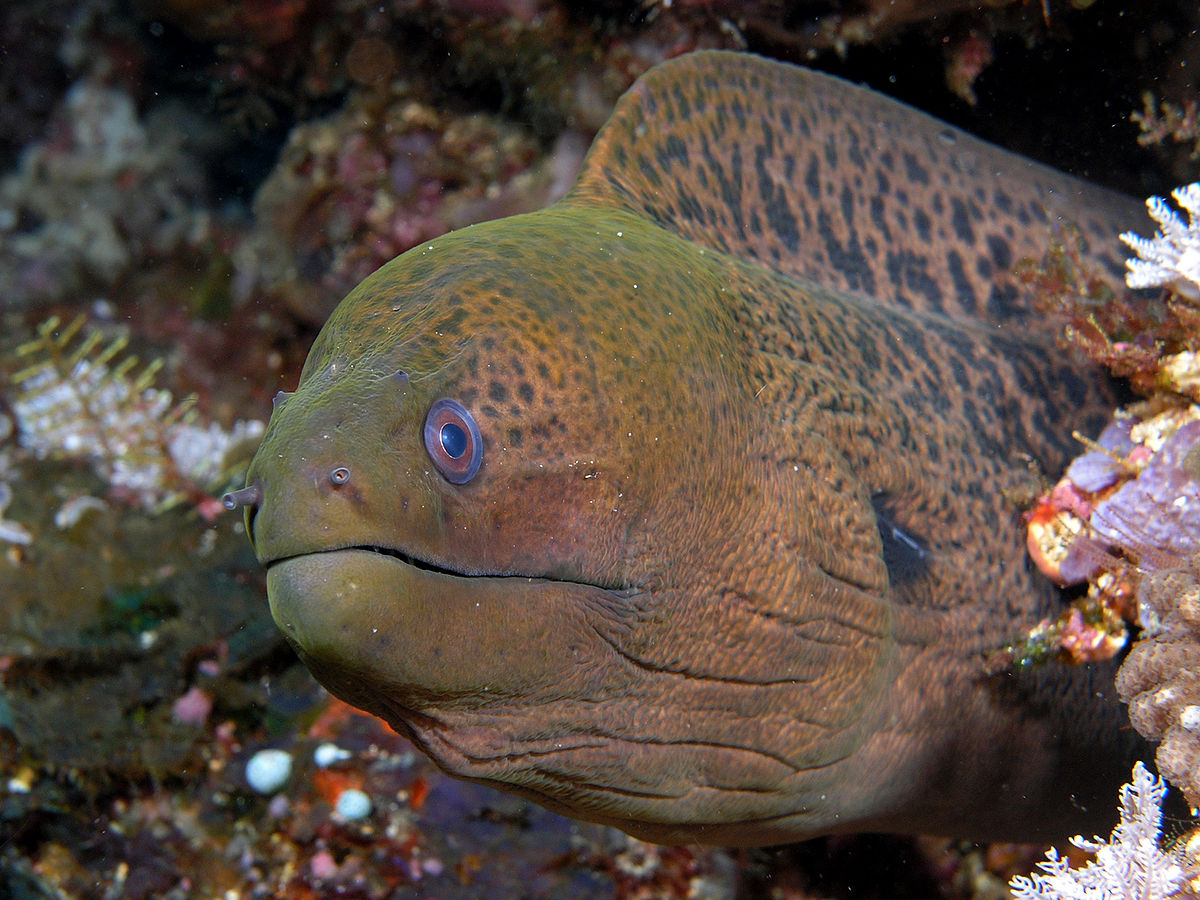
Range: Indo Pacific area
Diet: Carnivore including crustaceans, sea urchins and mollusks
Size: 20-59 inches
Life Span: between 10-30 years
Eels have small circular gills so the eel has to open and close its mouth for sufficient water flow over their gills.
Eels have poor eye sight but excellent smell. They will wait and hide in the crevices of rocks waiting for their prey to come near.
Eels have a second set of jaws called pharyngeal jaws which are found in their throat. They latch onto their prey with their outer jaws, push forward their pharyngeal jaws to grasp the prey, and then pulls it back into their throat and stomach.
Chocolate Chip Sea Stars
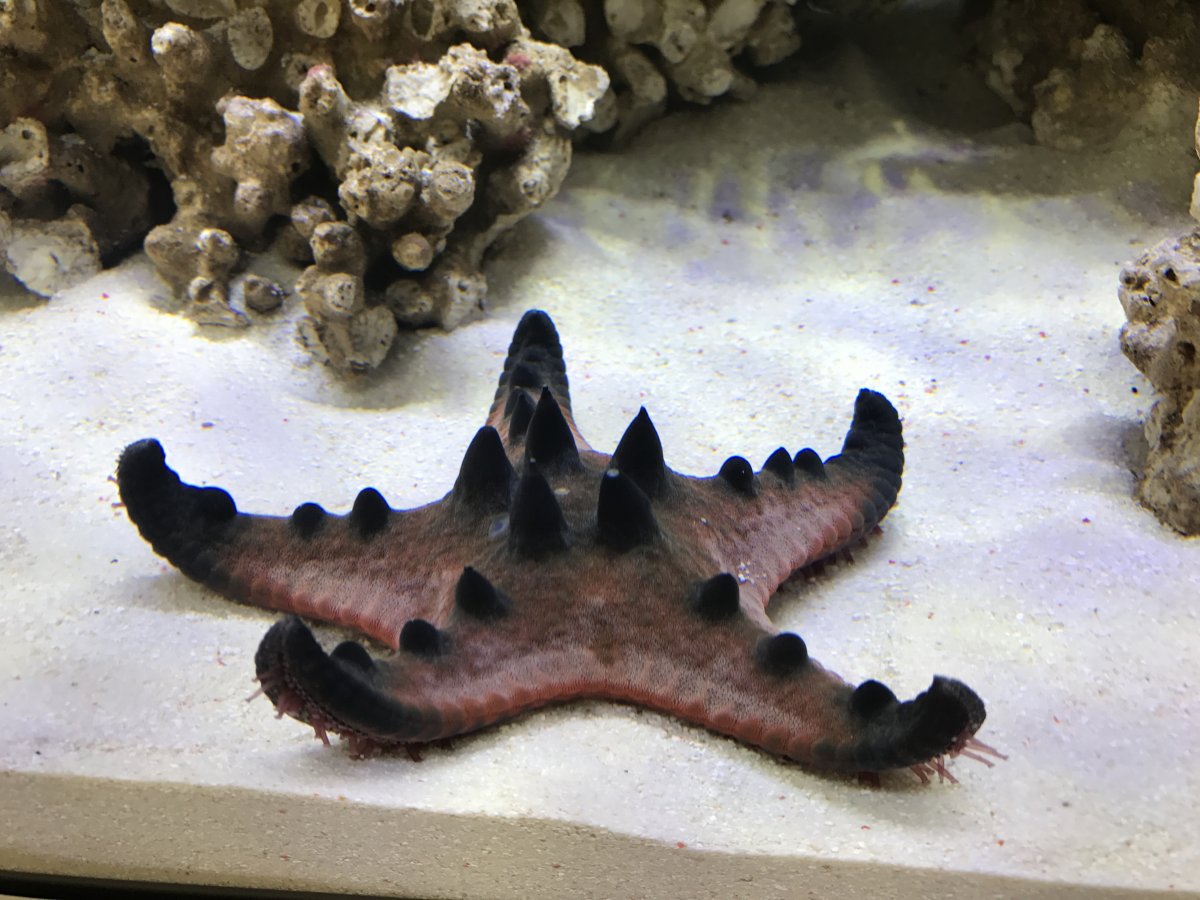
Range: Indo-Pacific Region
Diet: Omnivore including algae, hard corals, sponges, and snails
Size: up to 16 inches
Life Span: 20 years
Eels have small circular gills so the eel has to open and close its mouth for sufficient water flow over their gills.
Eels have poor eye sight but excellent smell. They will wait and hide in the crevices of rocks waiting for their prey to come near.
Eels have a second set of jaws called pharyngeal jaws which are found in their throat. They latch onto their prey with their outer jaws, push forward their pharyngeal jaws to grasp the prey, and then pulls it back into their throat and stomach.
Common Bluestripe Snapper
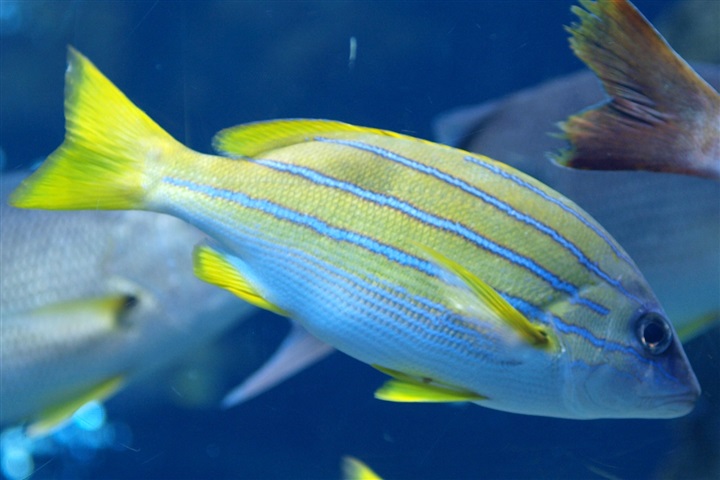
Range: Indian Ocean
Diet: Omnivore
Size: up to 16 inches
Life Span: 10 years
The Bluestripe Snapper has an unusual mimicry relationship with the goatfish because their coloration are nearly exactly like the other. This may be for predatory protection since the goatfish are more preferred than the snapper.
Remora

Range: Tropical Open Ocean
Diet: Omnivore
Size: 12-43 inches
Weight: up to 2.4 pounds
Life Span: 5 years
Remora fish are sometimes called “Sharksucker” and “Whalesucker” for their ability to attach themselves to larger animals, boats or even people. Their top dorsal fin takes a modified organ that is oval and is sucker-like with slate-like structures. These structures can open and close to create a suction against the larger marine animal. If the Remora swims backward, it will strengthen the suction whereas if they were to swim forward, they will release the suction.
The Remoras lower jaw is longer than their upper jaw and they lack a swim bladder. They are also able to move water across their gills themselves or at higher speeds just let the water be forced through their gills.
The Latin name “remora” means “to hold back.” This comes from the ancient belief that remoras were responsible for the death of the Roman emperor Caligula. The remoras held onto the bottom of his ships and prevented the Romans from fighting against their enemies ships.
